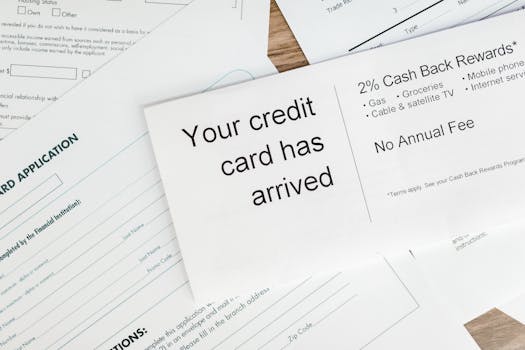Investing basics
What Is an ETF and Why Do Investors Love Them? Discover ETF Investing Essentials
ETF investing unlocks diversification, transparency, and easy portfolio management for all. Find actionable steps and real-world ETF strategies to grow your investments confidently here.
Advertisement
Picture someone who wants to grow their money but doesn’t want stress or endless research. ETF investing answers that need by making it simple to own hundreds of companies with a single purchase.
Understanding ETFs matters for anyone looking to invest smarter, diversify their savings, or avoid the hassle of traditional stock picking. ETFs have gained popularity because they truly lower the barrier to entry and set clear, achievable rules for beginners.
This article will guide you through what an ETF is, why they’ve captured investor attention, and give you practical steps and checklists to get started with ETF investing confidently—no matter your experience level.
Understanding How ETFs Work Empowers Your Investing
ETF investing revolves around a simple but powerful idea: pool investors’ money to buy a basket of assets, which can be traded on exchanges just like individual stocks.
By knowing their structure, you can avoid common mistakes and immediately spot how ETFs differ from mutual funds and individual stocks in both cost and flexibility.
A Snapshot of Core ETF Mechanics
ETFs wrap up a collection of assets—like stocks, bonds, or commodities—into one product. When you buy an ETF share, you essentially buy a slice of that entire basket.
ETFs trade during regular market hours, allowing you to buy or sell at any point the market is open. That’s convenient for anyone who likes to act fast or react based on live news.
The prices of ETF shares change throughout the day, mirroring the market values of their underlying assets. If Apple or Tesla spikes, your technology ETF reacts instantly.
Why Investors Use ETFs Instead of Picking Individual Stocks
Instead of choosing and tracking dozens of stocks or bonds, ETF investing lets people delegate that work in exchange for a diverse investment with one transaction.
Diversification means one weak-performing stock can’t ruin your portfolio. The built-in safety net allows you to avoid big losses when single companies stumble.
With ETFs, you also dodge many fees and restrictions found in mutual funds, giving you better control and transparency over your choices and actual costs day-to-day.
| Feature | ETF | Mutual Fund | Takeaway |
|---|---|---|---|
| Trading Hours | All market hours | Once per day (after market) | ETF offers flexible trading |
| Fees | Lower on average | Higher expenses | ETFs save you money |
| Diversification | Broad exposure | Broad exposure | Both offer, ETF is easier |
| Transparency | Updated daily | Reported quarterly | ETF gives up-to-date info |
| Tax Efficiency | More efficient | Less tax efficient | ETF can help lower taxes |
Key Reasons ETFs Attract Millions of Investors
People turn to ETF investing because they want instant diversity, low costs, and transparency, all in products they can buy or sell with the click of a button.
With abundance of choices, there’s an ETF for nearly every sector, investment style, or risk appetite—so you can easily build exactly the type of portfolio you want.
Choosing ETFs for Flexible Exposure
An investor might say, “I want to own technology, real estate, and international stocks but don’t want to pick companies.” One ETF per sector covers those goals directly.
With ETF investing, you can switch between markets or sectors as your needs evolve, meeting your financial goals with very little effort—and without huge tax bills.
- Pick a broad market ETF to own stocks from every industry—instant diversity means you’re not caught off guard by surprises in one part of the market.
- Add a sector ETF if you want a larger slice of tech, energy, or healthcare. This gives you more targeted growth without putting “all your eggs in one basket.”
- Choose an international ETF if you want exposure outside the U.S. These offer global diversification, important for portfolios aiming to withstand local downturns.
- Include a bond ETF to balance stock risk. Many investors use bond ETFs as a safety net, keeping portfolios steady in turbulent markets.
- Adjust allocations with a click—just buy or sell shares like any stock to instantly rebalance your risk and sector weights as your circumstances or plans change.
Layering sector and bond ETFs gives you hands-on control over risk, growth, and diversification, all without making constant complicated decisions.
Cost Matters: How ETFs Keep More in Your Pocket
When picking investments, every dollar saved on fees stays in your portfolio to keep compounding. ETFs are famous for low expense ratios compared to actively managed funds.
“I’m tired of paying 1% or more in annual fees,” a new investor might say. By choosing ETFs with expense ratios around 0.1%, you’re already ahead financially.
- Choose ETFs with low fees to put more cash into investments, instead of handing it away for management costs you may not need for broad exposure.
- Watch for commission-free trading platforms—many brokers let you buy and sell select ETFs with zero trading costs, amplifying the savings for regular investors.
- Compare ETF expense ratios directly by reading the fund’s official summary, usually displayed in bold on brokerage websites for easy side-by-side checks.
- Skip funds or products that charge hidden marketing fees or “loads.” ETF investing’s rule is transparency, so reject anything that isn’t straightforward on costs.
- Monitor and review your ETF expenses each year—lower costs mean faster account growth, so set a reminder to reevaluate at least every 12 months.
By prioritizing low-fee funds and trading on commission-free accounts, you accumulate more shares—helping compound returns work harder for your portfolio’s future.
ETF Structures Give You Built-in Diversification
ETF investing delivers nearly instant diversification by letting you buy a fraction of hundreds—or even thousands—of assets at once, reducing single-company risk.
Diversification through ETFs isn’t just about safety; it’s also the foundation for steadier long-term growth, especially when economic conditions shift unexpectedly.
Real-Life Analogy: A Fruit Basket Portfolio
Think of building your investments like shopping for fruit. Instead of just buying apples, you pick a mix—apples, oranges, bananas. If one spoils, you still have plenty left.
ETF investing does the same for your money. If one company or sector falls out of favor, the rest can keep your portfolio healthy, cushioning you against bad luck or surprise news.
“I don’t want everything riding on one stock.” By buying an ETF, you naturalize portfolio diversity, creating resilience against market swings you can’t predict in advance.
Minimum Portfolio Example for Beginners
Suppose someone starts with $500 and wants steady growth while learning the ropes. Their ETF portfolio could include a broad market fund, a technology sector ETF, and a bond ETF.
Each ETF buys into dozens of holdings, so $500 brings exposure to hundreds of companies. This ‘starter basket’ is more powerful and less risky than picking three or four individual stocks.
ETF investing this way means even small accounts get the benefits of instant built-in risk control—no complicated research required. That’s a strong foundation for building long-term wealth.
Step-by-Step Actions to Start ETF Investing Confidently
Putting ETF investing into practice is straightforward: opening a brokerage account, funding it, then choosing from the wide variety of ETFs to match your goals and risk tolerance.
Following clear steps eliminates doubts and prevents rookie mistakes, especially when you reference each account’s minimums and use their educational resources for choosing your first ETFs.
Open Your Investment Account the Right Way
Start by picking a reputable brokerage with commission-free ETFs. Most have quick online applications—expect a five- to ten-minute setup with your identification and bank information ready.
Next, transfer a small amount to begin. You’ll see a list of available ETFs. To keep it simple, sort by lowest fees, broadest exposure, or target sector—matching your risk comfort and time horizon.
Before buying, review each ETF’s holdings and track record—most accounts let you click and scan. Look for easy-to-understand product names and clear investment focus.
Checklist: What to Review Before Placing an ETF Order
Review the ETF ticker and name for accuracy—just like double-checking a shipping address.
Confirm expense ratio and underlying holdings; don’t pay premium prices for products doing less than what a low-cost option covers.
Set your order type—most beginners use market orders, which fill instantly at available prices. For greater control, you might try limit orders for execution at specific price points.
Tax Efficiency and Withdrawals Can Optimize Your Returns
ETF investing shines because its tax structure is more efficient than mutual funds, setting you up to keep more of every dollar earned when you sell your shares.
Knowing when to buy and sell, alongside holding periods, can help you qualify for lower long-term capital gains taxes and prevent unneeded surprise bills.
Tax Benefits in Everyday Practice
When you buy and hold an ETF for over a year before selling, gains are taxed at reduced long-term rates, which are typically lower than regular income taxes.
Most ETFs rarely trigger involuntary taxes or distributions. You control when you pay by deciding when to sell, allowing more consistent growth in your accounts over the years.
For retirement accounts, ETF investing lets you defer taxes further—growth inside an IRA or 401(k) is sheltered, multiplying tax benefits for disciplined investors.
Withdrawal Planning: Avoiding Unpleasant Surprises
Plan ETF withdrawals by checking your cost basis and record keeping—any good brokerage tracks this automatically, saving you paperwork and cash during tax time.
If you systematically sell shares over time, do so in smaller increments to minimize tax brackets and manage cash flow.
Don’t forget to adjust your ongoing ETF strategy as your withdrawal needs grow. Use a calendar reminder to review annually so you’re never caught off guard by market shifts or sudden expenses.
Roles for ETFs in Major Investment Strategies
ETF investing excels whether you follow growth, income, or balanced strategies. There’s an ETF for virtually every purpose, from aggressive gains to steady monthly payouts.
ETFs work in active or passive styles; they suit those who want to “set it and forget it” as much as those who want tactical pivots during market trends or personal milestones.
Scenario: Rebalancing With ETFs Over Time
Imagine your technology ETF grows faster than other funds, making tech 40% of your mix—when you only wanted 20%. You simply sell some tech ETF shares and buy more broad market ETF to restore balance.
This disciplined rebalancing prevents overexposure to hot sectors. The process can be handled quarterly or yearly, guided by your investment policy or brokerage’s suggested reminders.
Using ETF investing in this way keeps your portfolio in line with your risk and return goals so you stay on track for retirement, college funding, or other priorities.
Example: Building an Income Portfolio With ETFs
Retirees or income-seekers often choose ETFs paying regular dividends from baskets of stable companies or bonds. This generates monthly or quarterly cash payments directly to your account.
Each payment reduces stress and covers living expenses, letting investors maintain independence from part-time work or unpredictable market swings.
Using a mix of income-oriented ETFs alongside growth-focused funds ensures your capital keeps pace with inflation and lifestyle changes over decades of retirement.
The ETF Toolbox: Customizing for Your Unique Goals
ETF investing lets you assemble a portfolio shaped by your values, time horizon, and comfort with risk. You’re able to adapt easily as your life circumstances evolve.
Whether saving for a house, college, or retirement, ETFs can be the flexible building blocks, giving direct exposure to specific sectors or long-term steady growth with minimal intervention.
Adding Thematic or ESG ETFs
Suppose you care about green energy or companies with sustainable business practices. Thematic and ESG (Environmental, Social, Governance) ETFs deliver targeted options without complex research.
Say, “I want my savings to grow alongside clean technology companies.” You pick an ESG ETF aligned with those values, instantly filtering your investments for environmental impact.
This approach automates investing around personal beliefs, blending purpose and profit efficiently with a diverse range of options—and it’s all part of a broad ETF investing toolkit.
Adjusting Portfolio Mix for Changing Needs
Jobs, families, and market cycles all shift over time. You might need more bonds as you near retirement or want more growth stocks as your savings capacity increases.
ETF investing means rebalancing is both quick and cost-effective. Sell one ETF, buy another, and shift your exposure in minutes using your smartphone or laptop during your lunch break.
Quarterly portfolio reviews keep your allocations tuned to your evolving goals—making sure you’re always benefiting from the best features of ETFs without drifting away from your priorities.
Final Thoughts on ETF Investing for Every Investor
ETF investing isn’t a passing trend. It’s a robust way for anyone—beginners to seasoned savers—to own a globally diverse, low-cost, and truly flexible investment portfolio instantly.
Learning ETF investing gives you complete control, reduces costs, and builds long-term resilience in your financial life. Every section in this guide offers actionable steps you can start trying by next week.
Instead of feeling overwhelmed or locked out by complexity, use ETFs to build savings brick by brick. That’s real empowerment for your financial journey, no matter your starting point now.





